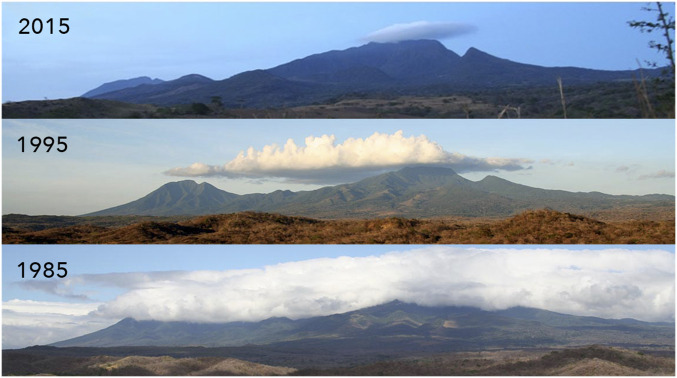Fig. 2.
Clouds of the cloud forest in ACG (red mountaintops in Fig. 1), Volcán Orosí (Left) and Volcán Cacao (Right) as viewed from the Pacific side of Costa Rica. In the 1980s, the standard view was a solid mass of clouds generated by the east-to-west trade winds pushing moist Caribbean air up and over the cordillera (Bottom image). When this air condenses, it creates a foggy and dripping cloud forest on the mountaintops. By the mid-1990s, a common view was a mix of 1980s views and many days with a fractured and much smaller cloud layer (Middle image). This was accompanied by drying forest litter, obvious reduction in epiphyte loads, and frequent reductions in stream flow. Today, there are often days with no clouds at all (Top image), mixed with days of a heavy cloud layer as in the 1980s, but the bottom of that layer is now 100 to 500 m higher in elevation. Heavy fog no longer swirls in through open doors and windows of the Cacao Biological Station at 1,100 m and ants are now a conspicuous part of the fauna at the station, whereas they were essentially absent when ACG was established in the mid-1980s (37, 38) because the soil and litter were too cold and wet for them.

